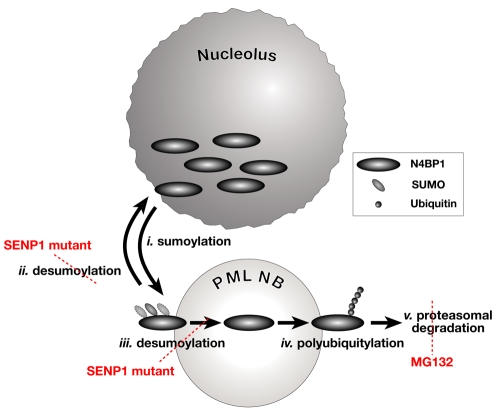Fig. 7.
Model of N4BP1 post-translational modification and turnover. N4BP1 is predominantly resident in the nucleolus. Sumoylation might promote association with PML NBs (i), where N4BP1 might undergo desumoylation by SENP1. It will then either traffic back to the nucleolus (ii) or be retained (iii) and undergo polyubiquitylation (iv) and degradation at proteasomes physically associated with PML NBs (v). The accumulation of N4BP1 at PML NBs in SENP1-mutant MEFs might be due to reduced relocalization to the nucleolus or because polyubiquitylation is blocked, or both. Treatment with MG132 leads to N4BP1 accumulation as a result of the blocking of degradation at PML-NB-associated proteasomes.

